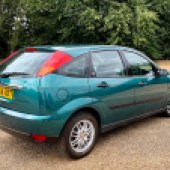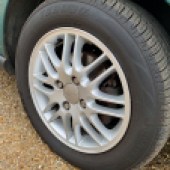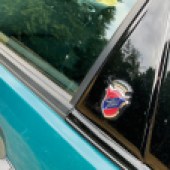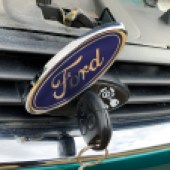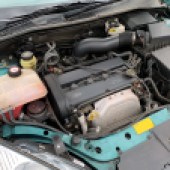Sharp looks and excellent dynamics combined to make the original Ford Focus the family car of choice for enthusiasts. It still impresses today, as long as you bag a good one
Words: Chris Randall
Officially revealed at the 1998 Geneva Motor Show as the replacement for the long-serving Ford Escort, the ‘New Edge’ styling courtesy of Claude Lobo and John Doughty meant the Ford Focus looked sharper than any rival. But the real revelation was how it drove, with an engineering team led by the late Richard Parry-Jones imbuing the new model with a blend of ride, handling and responsiveness that was unmatched by anything else in the class. Motoring magazines of the day were rightly impressed, the Focus becoming the benchmark by which all other family cars were judged.
It’s still just as impressive today, and a good example feels very sweet to drive indeed. Being a Ford there was a wide choice of petrol and diesel engines, the former being 16-valve Zetec units ranging from a slightly underpowered 1.4-litre with 74bhp to the punchier 129bhp 2-litre. Properly sporting RS aside, those after more performance were offered the ST170 with 168bhp and uprated brakes and suspension. The 1.8-litre TDdi oil-burner was frugal enough but made just 89bhp, and it was replaced in 2002 by a common-rail TDCi with a more useful 115bhp.
That same year also saw a light facelift – indicators in the headlamps rather than front bumper being a giveaway. A plentiful choice of trim levels meant there was something for every preference and pocket, and by the time the second-generation Focus arrived in 2004 the car had been a runaway success.
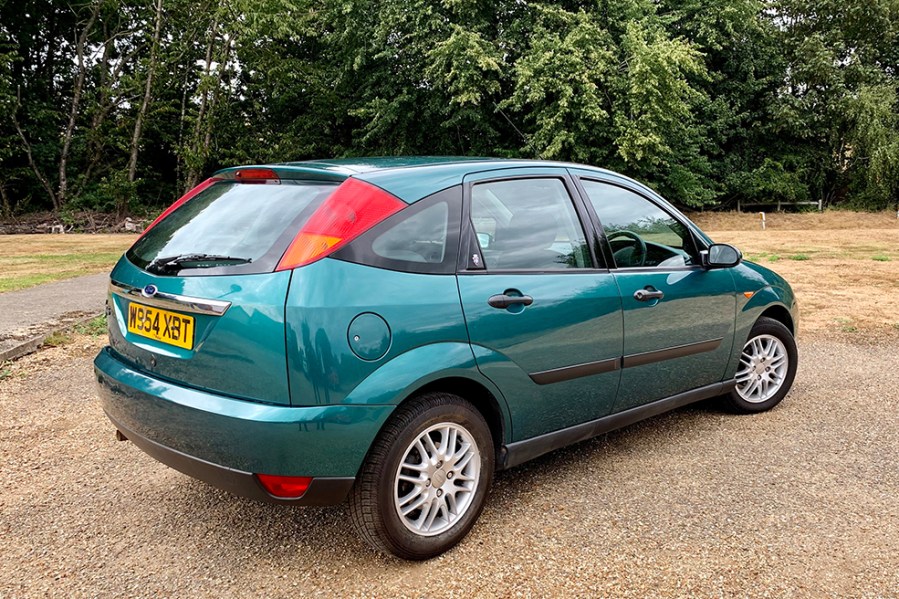
Bodywork
Corrosion is a real issue, and with professional repairs unlikely to be economically viable we’d advise thorough checks. It can munch away at all the usual spots such as sills, door bottoms and wheelarches (especially at the rear) but you should also scrutinise the tailgate around the wiper and hinges. The front and rear screen surrounds, and the metalwork around the door mirrors are other potential rot-spots. Catch things early and DIY repairs might suffice but if it’s more serious then finding a cleaner example is a better bet.
As for the rest of the bodywork it’s a case of checking for the usual scuffs, scrapes and dents and ensuring that bumpers, light units and mirrors are undamaged. Headlight covers turn milky but they can be revived if the damage isn’t too severe. The huge number of cars sold in the UK means a good supply of second-hand parts, so concentrate on finding a fundamentally solid car rather than worrying about light cosmetic damage.
Whether you prefer a hatchback, saloon or estate variant of the Ford Focus is a matter of personal taste, but the former was by far the most numerous and is easier to find today, as well as arguably making the best of the sharp styling. The saloon, meanwhile, is pretty rare by comparison.
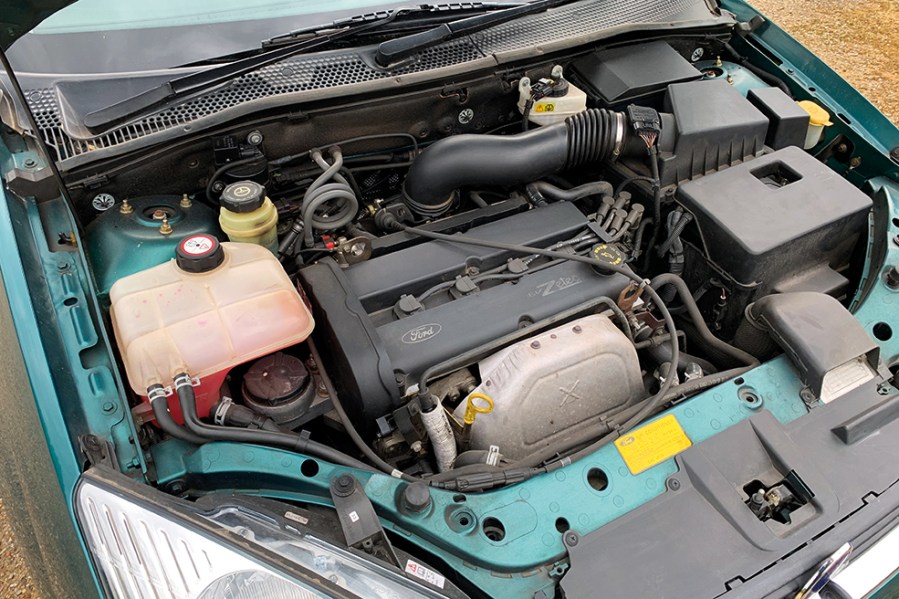
Engine and transmission
Even the newest Mk1 Ford Focus is approaching 20 years old, so the important thing is ensuring that maintenance hasn’t become a distant memory. Petrol engines will cover high mileages if they aren’t neglected, so look for a record of regular oil and filter changes and evidence of cam belt renewal; Ford set the replacement interval at 10 years/100,000 miles but around half that is the sensible approach today. Renewing the belt is a DIY task and a kit that includes tensioners and pulleys costs around £100, and add £40-45 for the water pump which is sensible to change at the same time.
Regular maintenance aside, you should also check for excessive exhaust smoke, oil and coolant leaks, and signs of overheating that could have compromised the head gasket. Poor running and a lumpy idle can be down to failing fuel injectors (new ones are £40 apiece) or engine management sensors, while perished vacuum hoses can also be to blame. A misfire is probably the coil pack on its way out but new ones aren’t expensive. Watch for warning lights relating to catalytic convertor failure, too, and if the engine cuts out it could be a faulty camshaft position or gearbox speed sensor.
Petrol engines make the best choice today, especially in 1.6- and 1.8-litre guises, but if you must have a diesel Ford Focus then the later TDCi is the one to go for. Even then you’ll want ensure the fuel system is in tip-top condition; early models could suffer from premature wear of the high-pressure pump, and should it need replacing even a reconditioned unit is upwards of £300. A diesel that’s smoky or lacks performance simply isn’t worth the risk or expense.
Transmission-wise, most cars got a five-speed manual ‘box (six-speed for the ST170) and the test drive will reveal the whines, rumbles and crunches that point to a hard life; second-hand ones are easy enough to find. Clutches last around 70,000 miles and a replacement kit is about £130. The alternative was a four-speed automatic, and while relatively rare today it’s not inherently problematic – just ensure that shifts are smooth.
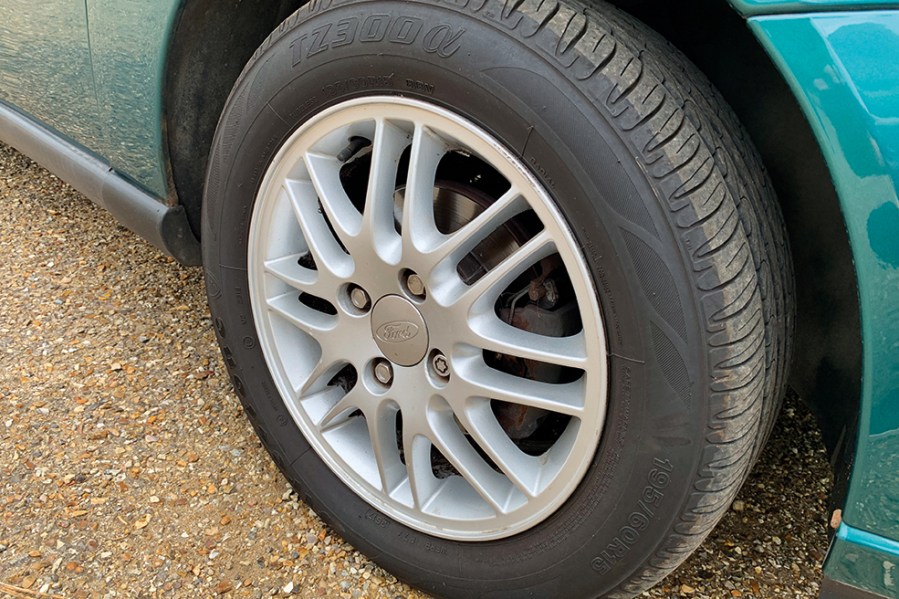
Suspension, steering and brakes
The suspension employed MacPherson struts at the front and a clever ‘Control Blade’ arrangement at the rear, and careful tuning provided the Ford Focus with a delightful blend of ride and handling. It’s what makes one so compelling to drive today, so it’s well worth budgeting for a thorough overhaul to get that as-new feeling. If you can do the work yourself then replacing worn ball joints and bushes won’t break the bank, and the same applies to dampers and coil springs, although be prepared to tackle a few rusty bolts. New front struts are £60-80 with coil springs costing £30-35, and using good quality parts is best.
There’s nothing complicated about the brakes, so it’s a just a matter of checking for worn pads and discs, seized calipers and corroded pipework. Replacement parts are inexpensive, but if ABS is fitted then ensure the warning light illuminates and goes out correctly on start-up.
Steering-wise, wear in the rack and associated joints and fluid leaks from the power-steering hydraulics are the things to watch for. It’s also worth listening out for the drone of worn wheel bearings (estate models seem more susceptible) but replacements are only around £35 each. Lastly, check for damaged and corroded alloys wheels along with worn and cheap tyres pointing to bargain-basement ownership.
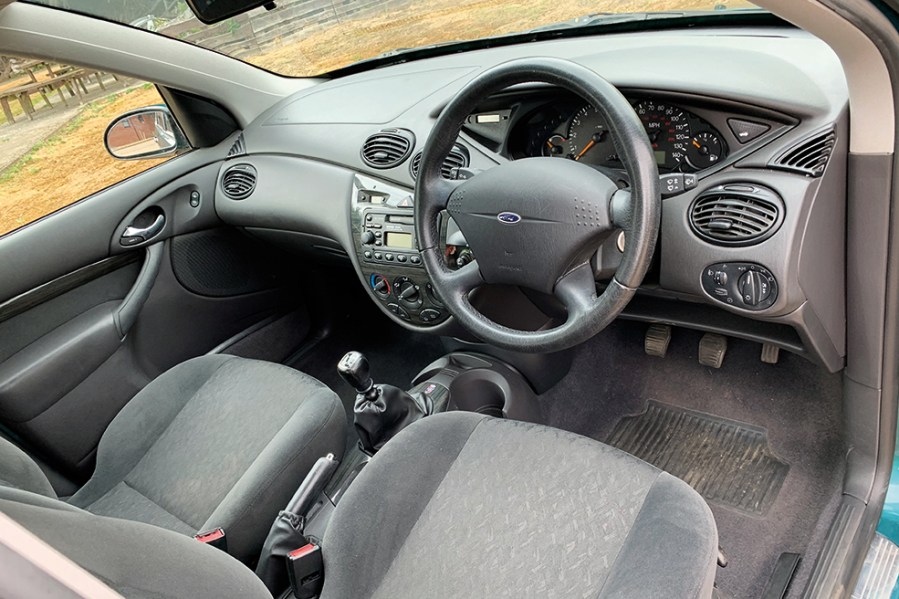
Interior and trim
While the cabin couldn’t really be considered plush (Ghia models aside, perhaps) buyers of a new Ford Focus would have had few complaints when it came to build and material quality. Unsurprisingly, things may be rather less smart today so it’s going to be a case of avoiding examples where the interior has suffered from years of abuse. Damage to seat trim, carpets and plastics will be obvious, and if the bodywork and mechanicals are sound then rejuvenating things with second-hand trim is a reasonable proposition. It’s worth checking for water ingress, though; an incorrectly fitted pollen filter can result in sodden foot-wells, while leaking rear light clusters damage the units themselves and let water into the boot area.
More important is establishing that all the electrics work as they should, so check everything. Dicky central locking and electric windows can be caused by water getting into control units and broken wiring between door and body, while other specific items to concentrate on include failure of the windscreen and rear window heating elements; an inoperative internal boot release switch; and failure of the heater resistor. Air-conditioning that still blows cold is a bonus. The instrument cluster can fail, too, although specialist repair is less than £100, and a non-working speedometer can be caused by a failed gearbox speed sensor; the part is cheap but changing it is a fiddly job. It’s also worth ensuring that tailgate electrics work properly as the wiring between body and hatch can break. All of this stuff can be fixed but a car with multiple electrical woes will certainly test your patience.
Ford Focus Mk1: our verdict
The Ford Focus still has the capacity to impress: its sharp dynamics and great engines have aged very well and there’s genuine fun to be had. The car remains a fantastic choice for family transport, while its dominance in period means there’s a good supply of models of all ages to be found. We’d go for a rarer original example from the early years of production, much like the car in our photos. As the purest incarnation of Ford’s New Edge styling these are most likely to gain value as time marches on.
There are plenty of cars for sale privately and at independent traders, and examples with just a shred of MoT can be picked up for a few hundred pounds. Something in reasonable condition is £500–700, and spending twice that should bag a nice example with upwards of 100k miles on the clock. An ST170 in smart condition is £1500–3000 but cooking models above £2000 are reaching top money and for that you should expect it to be in superb order with few miles and owners. Prices vary widely, so be prepared to shop around until you find a good one – and buy on condition rather than price.



